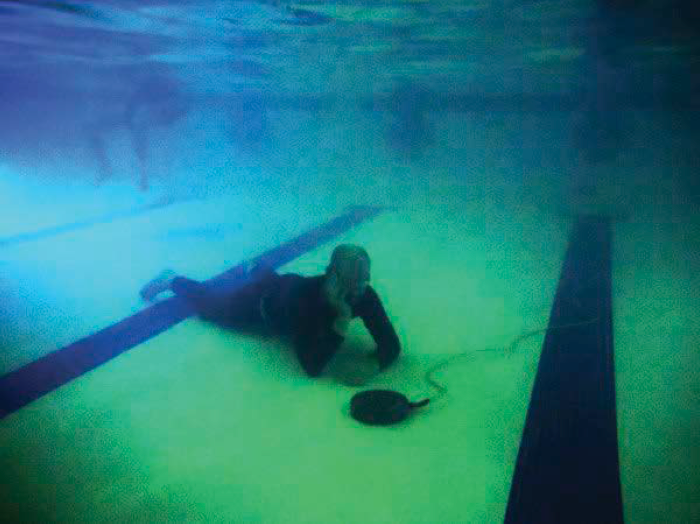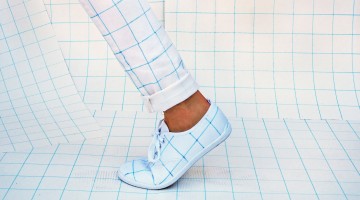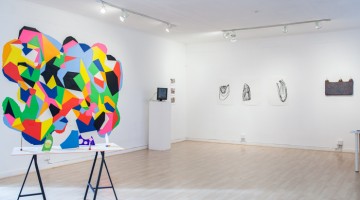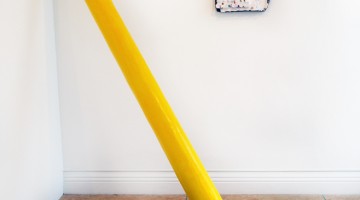In 2014, Lisa Rybovich Crallé and I had an ongoing conversation about combining her sculptural practice with my movement practice to make hybrid, site-specific pieces. That fall at the Arteles residency in Finland, Lisa was walking up a steep hill with a fellow resident when she noticed that the effort of walking while talking caused their conversation to derail in surprising ways. She wondered: How might physical exertion combined with dialogue produce new modes of discourse and learning?
Lisa wrote to me from Finland and proposed that we apply for Southern Exposure’s Alternative Exposure grant to fund a series of artist-led discussion seminars doubling as fitness classes. The premise—that foregrounding corporeal experiences in the context of critical discourse would offer new resources for learning—was intuitive for me. I’d begun training in dance while writing a PhD dissertation on materiality in experimental poetry, and my dancing had become necessary to my research and writing. It was the way that I moved my thinking.
We got the grant, and in 2015 we launched Heavy Breathing as a summer program of 12 free, weekly workout seminars designed by over 25 artists in public spaces and arts venues in San Francisco and Oakland. Sessions engaged participants in physical activities while listening to lectures or participating in discussion as a way to explore ideas from each presenting artist’s practice or research. Group activities ranged from aerobics and resistance training, to running and Reichian somatic exercises; discussion topics included Sapphic poetry, nineteeth century British gender and class dynamics understood through dominance/submission play, and the experience of anxiety as a symptom of financial risk management practices. Manners, what Lisa and I eventually decided to call our movement and sculpture-based collaboration, got going that year too, but Heavy Breathing came first.
I think of hybridity and divergences as the major through-lines between Manners and Heavy Breathing. With Manners, hybridity generates moving matter from the polarity of static objects and dynamic bodies. With Heavy Breathing, we’re interested in overlaying experiences of intellectual and corporeal engagement to challenge the mind-body dualism that treats certain operations as the province of one and not the other. Olive McKeon wrote an essay for the 2015 Heavy Breathing series catalog that observed the way our project “disrupts the codes and conventions of pedagogical spaces, layering the social norms of the studio class onto that of the seminar room.” Our interest in experimental pedagogy is motivated in part by the practices that inform our work. Lisa’s work as a sculptor and studio arts educator makes engaging hands and bodies intrinsic to her research and teaching; my work in dance and choreography engages bodies in labor, which I view as an extension of my research into the materiality of language and poetry.
Precedents for this experiment are broadly categorized as performance lectures or participatory performances. Writer and artist Christian Nagler’s Market Fitness and Yoga for Adjuncts engage participants in embodied, kinesthetic experiences as a way to somatically process the menacing scale and complexity of global financial systems. We invited Christian to lead a Heavy Breathing workshop as part of the 2015 series, and in a planning conversation, identified the challenge that was most interesting to us about Heavy Breathing’s format—If performance lectures blur the line between performance and pedagogy for the artist-lecturer, what might an equivalent, blurred experience look like for a seminar or discussion group participant?
The comparison is imperfect, because performance emphasizes presentation intended for display and external orientation. With Heavy Breathing, we’re interested in how somatic experiences—the internal awareness of the body’s workings, efforts, and interior relations—can be a resource for redefining terms and modes for critical discourse. The physical rituals of the seminar classroom, (such as chairs circled around a table and the prescribed gestures and expressions of attention) can feel oppressive and paralyzing. Visual artist Olivia Mole led a Heavy Breathing session last year in which she delivered an experimental lecture through an underwater speaker at the San Francisco Chinatown YMCA swimming pool, while participants swam around, moving in and out of range of her voice, processing her collaged reflections on the intersections between Irigaray, Nietzche, and Ren & Stimpy. Being immersed in water while wrangling my focus on Mole’s lecture was a somatically rich experience of literal and figurative free floating attention.
Free floating, improvised attention as a generative practice has plenty of philosophical, political, and art practice models: the dérive, peripatetic philosophy, and dance and musical improvisation. Sound artist Jacqueline Gordon and movement artist Margit Galanter co-led Unseen Influence, the second session in this year’s Heavy Breathing series at the Berkeley Art Museum & Pacific Film Archive. They engaged participants in activities that alternated between Feldenkrais-based attention to the body as we lay on the museum floor, and active listening-based attention to sound as we walked through the galleries with heightened awareness of our bodies.
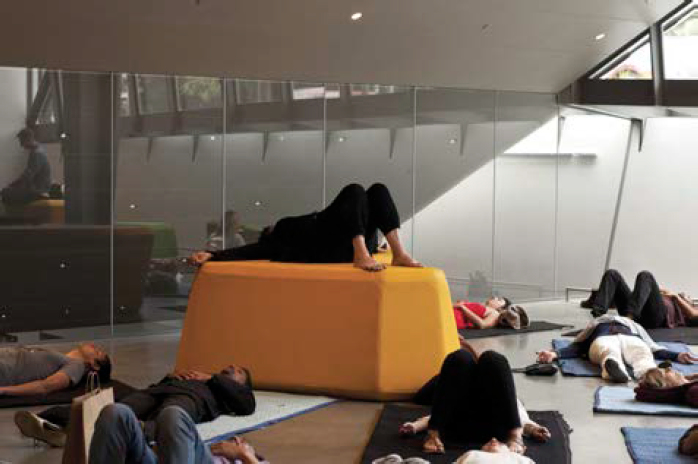
Jackie Gordon and Margit Galanter, Unseen Influence, 2016. Seminar for Heavy Breathing. Photograph by Andrea Carazo.
This year’s Heavy Breathing series is presented in collaboration with BAMPFA and expands from last year’s model of the fitness class to explore somatic experiences guided by structural, material, and social information that exceed conventions of “exercise.” Sessions engage participants in hands-on art making (Stephanie Syjuco’s Public Productions,), group relations (Olive McKeon’s Group Experience,), expanded social practice (Intentional Community in Exile,), and the final two sessions for this year: Sofia Córdova’s guided dance meditation on the “transcendental physical and psychic possibilities the dance floor provides the colored, marginalized body” (Army of Darkness) and Chris Sollars’s action and motion-based session, aimed at physically internalizing 21st century California’s state of drought (State of Drought).
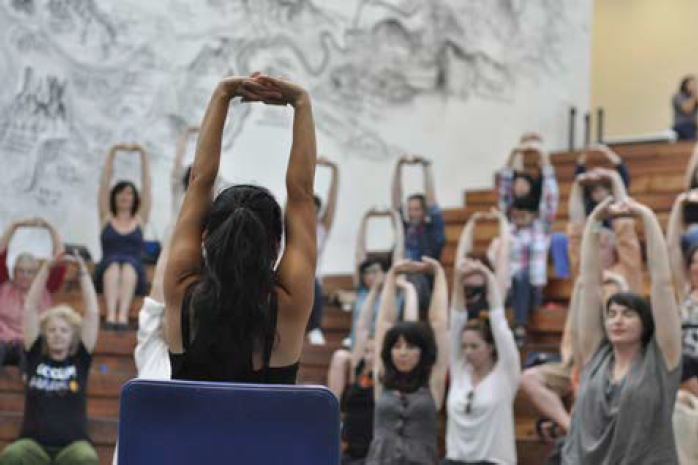
Stephanie Syjuco, Public Productions, 2016. Seminar for Heavy Breathing. Photograph by Andrea Carazo.
In her essay “Teaching as Art: The Contemporary Lecture-Performance,” Patricia Milder points to Joseph Beuys’s alternative teaching practices, including the performance lecture form, as one route to the “intentions and inventions” he imagined people might organize against our otherwise fully absorptive state- and money-based systems. She observes that: “Working with the fleeting substance of verbal language and the changing thoughts of an audience-as-students is material as amorphous and non-systematic as it gets.” For me, the freed and redirected attention we’re exploring with Heavy Breathing is, similarly, a way to organize bodies and sensory capacities against conventional forms of discourse that determine what we know, how we communicate, and ways we can be together. The contradictions of attempting this within institutional spaces of arts and pedagogy are real. But so too are the resources and relations we’ll access along the way.
